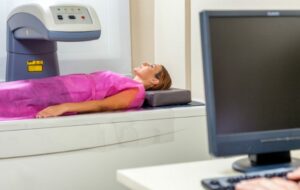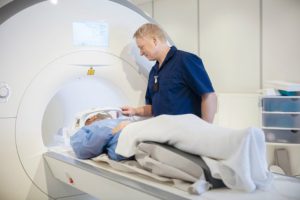Pregnancy Ultrasound: Nuchal Translucency Assessment
Between the 11th and 14th week of pregnancy, your healthcare provider may suggest a nuchal translucency assessment, commonly known as an NT scan.

Pregnancy Ultrasound: Nuchal Translucency Assessment
Between the 11th and 14th week of pregnancy, your healthcare provider may suggest a nuchal translucency assessment, commonly known as an NT scan. This very common screening tool helps assess the health of your baby in determining possible chromosomal abnormalities and congenital defects. This test is frequently used to check if your baby is it risk of disorders such as Down Syndrome.
How is the Scan Performed?
The nuchal translucency scan is a very simple, noninvasive procedure which is performed using ultrasound. The NT scan is done between 11- 13wks 6days gestation. At this stage of the pregnancy there is an accumulation of fluid behind the fetal neck which we measure. This accumulation of fluid is called the Nuchal Translucency. There are 2 parts to this NT scan: 1st part is the measurement of the nuchal thickness, the fetal length and doing a limited scan to check the heart rate, check that all limbs are present, check for brain tissue in the skull and look at the fetal profile to see that the nasal bone is present.
The 2nd part of the test is for the mother to have a blood test at a reputable pathology laboratory to check the hormone level in the mother’s blood. The hormone level in the blood corresponds to the fetal length. The blood test needs to be done within 48 hours of the scan. The NT scan is often done during one of your routine ultrasounds between 11 and 14 weeks.
What Does the NT Scan Diagnose?
While the nuchal translucency assessment does provide evidence of the increased risk of chromosomal disorders, it cannot alone serve as a diagnostic tool. If the test indicates a possible risk, your healthcare provider will suggest further testing to determine whether or not your baby does indeed carry a chromosomal disorder. These further tests would include blood tests or more invasive testing such as an amniocentesis or a chorionic villus sampling . These tests are stronger indicators for making an official diagnosis.
Who Should Have the Nuchal Translucency Assessment?
Every expectant woman carries a risk that her fetus/baby has a chromosomal defect. The risk of a chromosomal abnormality increases with maternal age, or with women with a family history of chromosomal disorders ,or women who has had a previous chromosomally abnormal pregnancy.
Is the NT scan safe?
The NT scan is a perfectly safe and noninvasive procedure. Your technician doing the scan is accredited with the Fetal Medicine Foundation and will be happy to answer any questions you may have. Please do not hesitate to contact Vision XRAY with any concerns.
Read our articles and FAQs
We’re delighted to provide updates on the latest medical imaging technology and answer your most frequently asked questions about our services.









